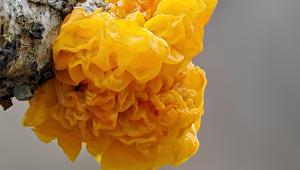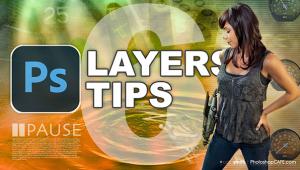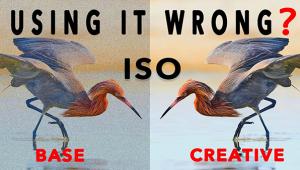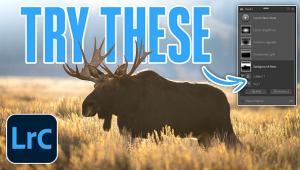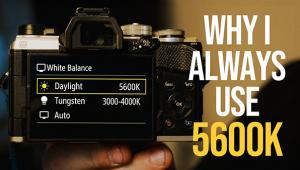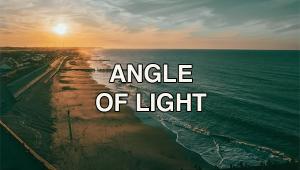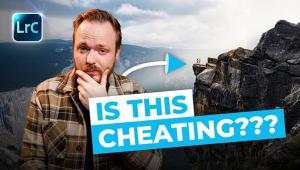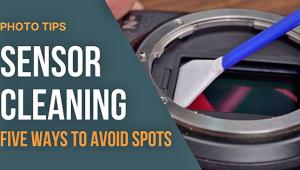Digital Help
Q&A For Digital Photography
Digital Help is designed to aid you in getting the most from your digital photography, printing, scanning, and image creation. Each month, David Brooks provides solutions to problems you might encounter with matters such as color calibration and management, digital printer and scanner settings, and working with digital photographic images with many different kinds of cameras and software. All questions sent to him will be answered with the most appropriate information he can access and provide. However, not all questions and answers will appear in this department. Readers can send questions to David Brooks addressed to Shutterbug magazine, through the Shutterbug website (www.shutterbug.com), directly via e-mail to: editorial@shutterbug.com or goofotografx@gmail.com or by US Mail to: David Brooks, PO Box 2830, Lompoc, CA 93438.
Prints Too Dark? Not With Retail Print Services
Q. I enjoyed your article in the December 2008 issue of Shutterbug. I have a question: if I don’t print my photos at home, but rather go to a retail store and have it done on their printer, can I do anything to match up with the profile of their printer so what I see on my monitor comes out of their printer looking the same? (I go to Sam’s Club and they have a Fuji printer.)
Kevin Stroble
via e-mail
A. There usually is not a dark print problem with retail print services because their printers are auto adjusted for an ideal print density and do not depend on any editing of brightness done by the user. Also, most retail printers prefer or require files in JPEG format and the default PC color space profile for that is sRGB. If you are using Photoshop, Elements, or Lightroom and are accessing retail printing like you mentioned, to obtain the best match select sRGB in Color Settings rather than Adobe RGB color space. If your image files are JPEG from a digital camera, to obtain the best retail prints avoid editing and re-saving the files, just copy them as is to whatever media you are submitting to the printer.
Scanning Kodachrome Slides
Q. I read with interest your recent blog on Shutterbug.com about scanning Kodachrome slides. I am in the market for a scanner and have been researching ad nauseam. I am at the point at which any will do and none is worthy. I have mainly Kodachrome slides from many years ago, and some more recent negatives. I’m down to the Epson V750, which I know you rated highly in 2005, the Plustek OpticFilm 7500i Ai, and one of the Nikon Super COOLSCANs. Now that I know that the problem scanning Kodachrome slides was more software than hardware, any thoughts on which way I should go? I don’t need top of the line, but I’m willing to pay a reasonable amount for quality. I really appreciate your advice on the website. I read through a couple of years of your columns and learned a lot.
Cathy Kennedy
via e-mail
A. The scanner I am currently using to scan Kodachrome is the Plustek OpticFilm 7500i Ai, which comes with LaserSoft’s SilverFast Ai 6.6 software. It is the best 35mm scanner I have used, providing much superior results, with the exception of the Minolta DiMAGE Scan Elite 5400 II, which has not been available for a while now. Nikon, according to industry insiders, will not be continuing their scanner line after the current inventory is sold out, and they have not kept up on software upgrades.
I use an Epson Perfection V500 with LaserSoft SilverFast added, but only for scanning medium format film and utility print scanning. It does a great job with 120 medium format film. I do not recommend any flat-bed scanner as a primary option for scanning 35mm. The Epson Perfection V700 and V750-M Pro are the best at this, but fall far short in 35mm film scan quality compared to the Plustek.
Plustek just announced an upgraded OpticFilm 7900i model, but I don’t know when that new model will actually arrive in the US. But it is supposed to have some internal improvements that are worthwhile.
More On 35mm Scanners
Q. In the April 2009 issue of Shutterbug I noticed the mention of the Plustek OpticFilm 7500i SE, and your evaluation of it as producing “the best 35mm film scans I have ever experienced.” Specifically, do you regard it as superior to the Minolta DiMAGE Scan Multi PRO? I was surprised simply because I had never heard of that scanner. In checking through the Shutterbug website I can’t find a single independent review of that machine.
From what I can find elsewhere on the Internet, I gather that the 7500i is only for PCs, but can be made to work also on a Mac, if using SilverFast. Is that correct? Since I now work on a Mac Pro, I’m interested in checking this out. Which version of SilverFast does the 7500i handle?
Loye Miller
via e-mail
A. I tested and reviewed the Plustek OpticFilm 7200i 35mm scanner a couple of years ago, and it was published in Shutterbug. (Editor’s Note: Type Plustek into the Search box on the “Shutterbug” homepage.) The Plustek OpticFilm 7500i is an upgrade of that scanner, and I bought one about a year ago. The Plustek 7500i comes in models for both Windows and Mac, which I have and use on my Mac. The Plustek OpticFilm scanners are supplied with LaserSoft’s SilverFast software as the primary driver, in either SE or Ai 6 versions.
The unit I have is described on the Plustek website at: www.plustek.com/product/7500i_ai.asp.
The version of SilverFast I am using is described at: www.silverfast.com/show/silverfast-ai-studio/en.html.
The main advantage of the Plustek is that it scans at an optical resolution of 7200dpi, and my old Minolta DiMAGE Scan Elite 5400 II is limited to 5400ppi, so the Plustek has an 1800ppi advantage that makes a significant difference in a scanned image from 35mm film.
Windows PCs For Digital Photography
Q. I am planning to upgrade my computer and need some help. I am a PC user; sorry, but I have my reasons. I do weddings and process 600-800 photos per wedding using CS3. I do not do games, videos, or 3D graphics, but my present computer is still too slow. No one seems to want to make suggestions as to what I need and most non-business computers are gaming oriented. What should I look for in terms of a processor (type and speed, I’m thinking Quad Core 2.5+), motherboard, RAM (DDR3?), and video card? I want to have a little more than I actually need, but not overkill.
Jim Liessmann
via e-mail
A. Dell offers pretty high-performance workstations that can be customized to meet your performance needs, but I do not see that they list a video card that is particularly recommended for pro graphics. And I have had enough horror stories come back to me about Dell to not be very enthusiastic about recommending their products.
Another option that I have dealt with and seems to be reliable is TigerDirect.com. They have some workstation PCs for CAD purposes that are quite high performance. One of the problems with PCs is that the companies that made the best performance graphics video cards, Matrox and ATI, have either gone out of business or in the case of ATI have been bought by AMD, which is now looking shaky in this economy. There were several small pro graphics workstation manufacturers who built great performing machines for the kind of performance you are looking for, but those that I knew apparently did not survive as it is too small a market.
Apple’s Macs have been using Intel processors for a few years now, so you can run both operating systems on any recent Mac. So I now have a Mac Pro and it has both the Mac OS X 10.5 Leopard operating system and Microsoft’s Windows XP Pro. (Vista is NOT recommended for doing color managed photographic processing, and will soon be replaced with Windows 7). My system is set up with Parallels software so I can just toggle from Apple to Windows, or you can set a Mac up to be dual boot with Apple’s Boot Camp.
Is Corel’s Paint Shop Pro Photo X2 A Substitute For Photoshop?
Q. Has Shutterbug written anything on Corel’s Paint Shop Pro? I think it is a lot simpler to use than Photoshop and quicker to learn.
Chuck Fisher
via e-mail
A. I reported on Corel’s Paint Shop Pro Photo X2 last year in Shutterbug. You can find the report as well as reports on previous versions on our website (www.shutterbug.com). Just type Corel into the Search box on the homepage. Corel’s Paint Shop Pro Photo X2 is comparable to Adobe’s Photoshop Elements 6/7 in price and ease of use, but it is not comparable to Adobe’s Photoshop CS4 in features, or sophistication and functions, plus CS4 is much more costly to purchase.
Compared to Adobe’s Photoshop Elements, Paint Shop Pro Photo X2 is about the same in what is required to learn to use the application, but that depends on the individual, how computer literate and how experienced in photography he or she might be. Both applications rely extensively on automated image adjustment features to make working with photo image files easy, but automation does not always work well because it is based on a false premise that all photographs are alike, and they are not. Each is usually unique in subject content. In addition, all software applications are a work in progress. With each new version parts of it are improved and other features remain the same, and this can cause inefficiencies and confusion, thus the often steep learning curve.
Choices In Scanners After Microtek’s Close
Q. I just read your review on the Microtek ArtixScan M1 film scanner and I was about to order one when I came across a report that Microtek is closing sales and support in the US. What is your feeling of purchasing the M1 now?
Bob Sanders
via e-mail
A. Even if you could find one in stock and negotiate a good price, there could be a problem if you would need service or support. Although I personally like the M1—and I do a lot of scanning—I did not buy one myself. I hesitate to recommend a scanning strategy for you without knowing more specifically what your needs are.
If you want the latest word on Microtek for North America, you can read it online at: www.noydcom.com/press_release/microtek/new_focus/.
Dealer Information Problem
Q. I am in the market for a film scanner. I just upgraded from a Mac G4 to an iMac (OS X 10.5.2) and had to retire my old reliable Canon 2710, as there are apparently no software drivers available for the newer OS. In your April 2009 column you highly recommended the Plustek OpticFilm 7500i SE film scanner. In the same column you said that you “quit using PCs and Windows, and now run four Apple Macs.”
I decided to act on your recommendation, but several retailers have informed me that the Plustek scanner is for PCs only, and will not work on a Mac. They said that the 7200 was the only Plustek machine that was Mac compatible. Are you actually using a 7500i SE? If so, what’s the secret?
Bob Adkins
via e-mail
A. I have a Plustek OpticFilm 7500i running on a Mac. The driver is from LaserSoft Imaging and the software is SilverFast Ai 6, which is available for both Mac and Windows. The dealers you have spoken to don’t know what they are talking about, I’m sorry to say. The secret is to deal with retailers that really know their products. You can purchase the Plustek OpticFilm 7500i with SilverFast for Mac from B&H and Adorama, both advertisers in Shutterbug.
Adding A Desktop LCD Display To A Laptop
Q. I am making the switch to Mac from PC and am going to take the plunge with a MacBook Pro and am considering the Apple 24” Cinema Display. My question is: should I be considering a different monitor? I use Photoshop CS4, Lightroom, and various Nik plug-ins.
Wayne Summers
via e-mail
A. Personally, I don’t work with laptops but I have a close friend and colleague who does, so I am not unaware of the issues involved. I have been aware of Apple’s new 24” Cinema Display for laptops, but so far have not seen any graphics user reports on them anywhere. However, the latest iMacs and Apple Cinema Displays have had particularly severe problems of late, which is “prints too dark” caused by a display that is too bright. And, getting the display brightness under control to a measured level that will not result in images printing too dark is a problem that has a limited solution that is part of a display calibration and profiling process.
My choice would be to get a desktop display primarily for its graphics performance capabilities from an independent manufacturer that has both brightness and contrast adjustment controls. I assume from what I have seen at the Apple store that standard to mini DVI connector adapters are available. In my opinion, an LCD display in the same size and price range that does have superior graphics performance is the Samsung SyncMaster 245T.
ANNOUNCEMENT
I am pleased to announce a new Fourth Edition, adding four chapters to my eBook DIGITAL DARKROOM RESOURCE CD. The CD now contains 30 chapters totaling 359 pages in Adobe Acrobat .PDF format, providing easy-to-read text and large high-quality illustration. The CD is available for $20 plus $4 shipping and handling (US Mail if available). Ordering is as simple as sending a check or money order for $24 made out to me, David B. Brooks, and mailed to PO Box 2830, Lompoc, CA 93438.
- Log in or register to post comments













